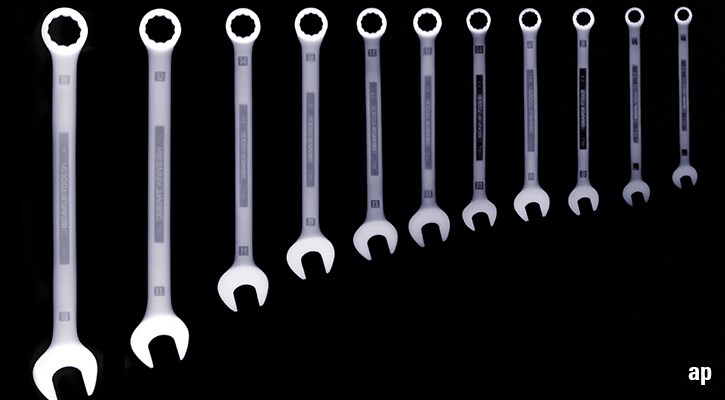
Last year proved to be a good one as markets rebounded quickly following the initial shock of the COVID-19 pandemic. But 2021 has turned out to be challenging, largely because of a change in sector leadership, admits Trevor Gurwich, vice-president and senior portfolio manager with Kansas City, Mo.-based American Century Investment Management. Nevertheless Gurwich, who oversees the $37 million 3-star, bronze-rated CIBC International Small Companies, counsels patience.
“We launched the strategy in 2001 and it has had an annualized return of about 14% since inception, for an outperformance of over 500 basis points over that period,” says Gurwich, whose 11-person team oversees about US$5 billion in assets, including the US$600 American Century International Opportunities Fund, the model for the CIBC fund. “We had a good year in 2020. This year has been a little more challenging. And it’s not atypical when you see big macro inflections. There was a large macro turnaround last November when two catalysts transpired.”
The first catalyst was when drug makers unveiled vaccines for the coronavirus. The second was the election of Joe Biden as president of the U.S. “We ended up seeing quite a big factor rotation where more of the value, cyclical types of names started to outperform. Year-to-date financials have seen the biggest outperformance and are up almost 10%. Materials are up about 8%, energy 6% and consumer discretionary 3%.” Conversely, utilities are down 9%, information technology 6%, and healthcare 5%.
The pandemic has had a profound impact in the way manufacturing companies have had to adapt to closures and then re-openings and challenges to supply management. As a result, Gurwich argues that as economies return to normal, we can expect to see large price increases in many sectors, as well as shipping rates and commodity prices.
“When you have these big inflection points the market gets very excited about economic recovery,” says Gurwich, a 23-year industry veteran who joined American Century in 1998, after a brief career with Arthur Andersen and earning master’s degree in finance and investments at Columbia Business School. “They get excited about reflation and believe we will see a change in interest rates, which is driving the financials and the materials somewhat. Energy is also heating up on greater economic activity. That has caused what we consider a short-term dislocation in performance.” These dislocations, asserts Gurwich, often create buying opportunities when the market returns to focus on companies showing strong earnings growth.
Gurwich and his team have managed the CIBC fund since August 2014. Over the past three and five-year periods, the fund returned an annualized 4.59% and 10.37% respectively. In contrast the Global Small/Mid Cap equity category averaged 5.15% and 8.77% (in C$ terms). Last year, the fund returned 26.4%, compared to 13.89% for the category. Year-to-date (May 18), the fund has returned -4.33%, versus 4.44% for the category.
How to Pick Stocks?
Gurwich’s team adheres to three principles: earnings drive stock prices; the small cap market is highly inefficient in identifying inflection points or changes in their fundamentals and; third, by focusing on changes in fundamentals they can take advantage of earnings accelerations as well as re-rating of price-earnings multiples.
Simply put, Gurwich and his team rely on a stock-picking system that is based on four letters: I for inflection, S for sustainability, G for earnings gap and V for valuation.
Most important, however, is the “S” in the system because if Gurwich and his team are uncomfortable with the sustainability of a company’s earnings, then they are unlikely to invest in these types of companies. “Ultimately, what we will do is focus on earnings re-ratings coming through and whether they will come through on a sustainable basis. That’s the primary reason for what we consider is short-term underperformance. It’s the factors changing and moving to more cyclical and value-oriented names. But ultimately the market will turn once again, and towards earnings growth. I’m convinced it will.”
He notes that the recent period reminds him of the 2008-09 financial crisis when Ben Bernanke, then head of the U.S. Federal Reserve, lowered interest rates and started Quantitative Easing to restore confidence in global economies. “Many banks that traded at 0.3 times book value were re-rated upwards to 0.6 times book value, or 0.8 times. Suppliers to Chrysler and General Motors that were technically heading towards bankruptcy doubled and tripled in price.” Clearly, he argues, their valuations had little to do with the sustainability of their earnings.
Stocks in Focus
From a sector viewpoint, industrials account for the largest sector at 27%, followed by consumer discretionary 20%, technology 14% and basic materials 9%. On a geographic basis, Japan is the largest country weight at 18%, followed by the U.K. 14%, Canada 12%, Taiwan 8%, and Sweden 6%, with smaller holdings in countries such as China. The range in market capitalization for stocks is US$330 million to US$9 billion.
One of the top names in the portfolio of 129 holdings is Canadian maker of flight simulators CAE Inc. (CAE). The team began buying in mid-2020. “We saw a lot of inflection, based on the fact that airplane mileage and utilization was starting to pick up significantly from June onwards. That inflection was starting to look very positive to us,” says Gurwich, noting that airlines such as Ryanair said that bookings for this summer were up significantly. “We also noticed that Delta was increasing the number of pilots and the Boeing 737-MAX was being re-commissioned after being taken offline due to software glitches. All that translated into quite a big inflection point for CAE.”
CAE’s shares took a hit when COVID-19 struck and its shares plummeted from about C$41.50 a share to C$18.60 in March 2020. “As we started to see airplane utilization rates reversing that got us interested in the name,” says Gurwich. “We see about 15-20% upside [going forward].”
Another favorite name is Howden Joinery Group PLC (HWDN), a leading U.K.-based supplier to the building trade that re-models kitchens and houses, and has a market cap of (Pound sterling) 4.7billion. “They are taking advantage of the big re-modeling trend in the U.K. It’s a global theme, actually, where lower interest rates are creating far more affordability for people to upgrading their homes,” says Gurwich. Gurwich anticipates that the firm will experience about 40% earnings per share growth (EPS) in 2021, and 15-20% EPS growth in 2022. Howden’s shares are trading at 12.8 times enterprise value to EBITDA, and falling to 11 times in 2022. Shares are trading at GBP 793.3.





















